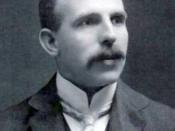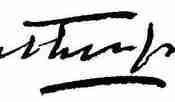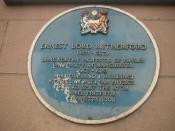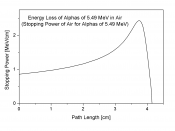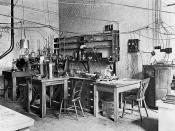Ernest Rutherford was born in Nelson, New Zealand.
Rutherford demonstrated his abilities as a scientist early on while working on his B.Sc. at the University of New Zealand in 1894. He showed that the magnetization can be removed from a magnetized iron needle by dissolving the surface layer of the metal in acid.
He began work at Cambridge in 1895 and was a professor at the University of Manchester from 1907 on.
It is during this time period that Rutherford made his most important discoveries. Most of Rutherford's work was centered on radioactivity. He is the one who named the alpha and beta particles. In 1911, Rutherford conducted his famous "gold foil" experiment. He directed alpha particles at a thin sheet of gold foil and expected the particles to simply travel straight through the foil.
However, he obtained very different results. Although many of the particles did in fact go straight through the foil, some of them were deflected at large angles.
Rutherford concluded that the deflections of the alpha particles were caused by a center of positive charge that contained most of the atom's mass (the nucleus). He also explained that the particles that went straight through the foil did so because the atom is mostly empty space and that the distance between electrons and the nucleus is vast compared to the size of the nucleus itself.
In 1919, he discovered the "artificial disintegration" of nitrogen. His experiments show that under alpha radiation, nitrogen is decomposed and hydrogen is formed. Rutherford also devised an electrical method for counting the number of alpha particles emitted from radioactive substances. Using this method, he measured the number of alpha particles expelled per second from one gram of radium to be 34000.
Before Rutherford, the smallest particle of matter was represented as a solid ball. Rutherford's experiments with the decay of radioactive elements caused him to think in terms of a more definite structure. He observed that the disintegration of elements was accompanied by emissions of positive helium and of negative particles of almost no mass. He then concluded that an atom is not the last unit of matter, rather, it is composed of subatomic particles.
